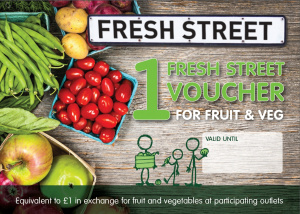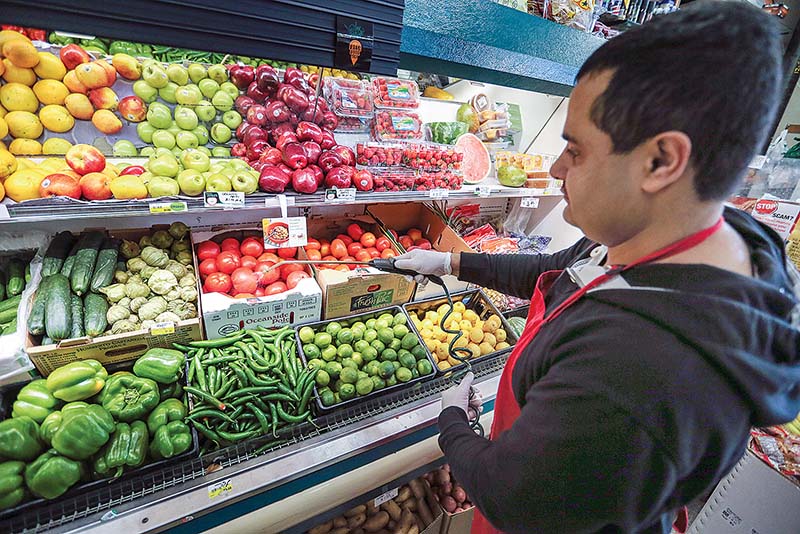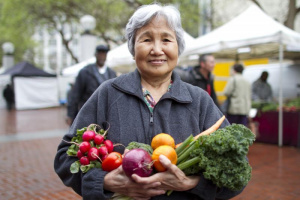This project is a part of Duke’s Common Cents Lab. The Common Cents Lab is funded by the MetLife Foundation. The project was led by Irrational Labs’ Richard Mathera.
Using Implementation Intentions to Improve Voucher Program Habit Formation
Background
Nearly 40 million adults and 6.5 million children face food insecurity in the US in 2017, according to the USDA. Food insecurity and eating an unhealthy diet are directly intertwined: families that struggle to provide enough to eat often turn to unhealthy foods because they are cheaper and more filling than healthier food. Over time, food insecurity and poor diets not only affect people’s health, but they also further undermine people’s financial well-being as they grapple with paying higher costs tied to obesity, diabetes, and other chronic diseases.
Only 26% of American food-related spending is on fruit and vegetables, with a much lower percentage for lower-income Americans. To address these challenges, Vouchers 4 Veggies (aka V4V or EatSF in San Francisco) provides vouchers to low-income San Franciscans for fresh produce to improve their health and well-being.
Key Insights
To understand how V4V participants use their vouchers and to identify areas where we might promote habit formation around long-term fruit and vegetable consumption, we first conducted extensive observational research. For example, we observed interactions in clinics, single-room occupancy hotels (SROs), and the V4V offices in the Tenderloin and Bayview neighborhoods of San Francisco. We visited the places people buy food, such as corner stores, supermarkets, and farmers’ markets, to understand how people purchase fresh food. We also conducted qualitative interviews with individuals and V4V participants from these communities.

Out of this research, we developed several hypotheses about voucher use, which we further validated by analyzing quantitative program data and qualitative methods. We find that fruit and vegetable consumption are impacted by:
- Cooking ability/preference for cooking;
- Access to a kitchen; and
- Cultural factors related to food consumption and cooking knowledge
This investigative research also brought to light several key barriers that prevent recipients from using their vouchers to build habits around fruits and vegetables consumption.
- People treat vouchers as different from normal purchases and often made specific trips solely to use them. Even people who routinely shopped at supermarkets which accepted the vouchers would make separate trips to use the vouchers and would not purchase anything else. The allure of getting something for free drives people to make these trips. These one-off trips are not a sustainable way to incorporate more fruit and vegetables into an V4V user’s diet. After the voucher program ends, participant easily stopped making these one-off trips and would often stop buying more fruit and vegetables.
- Recipients perceive vouchers as opportunities to buy “treats,” or fruit and vegetables that they enjoy and will eat. Consequently, there is high consumption of the fruit and vegetables purchased and little food waste. However, these “treats” might be priced higher than recipients would purchase with their own money. This creates another hurdle to longer-term increases in fruit and vegetable consumption because recipients form unsustainable purchasing habits.
Intervention
We hypothesized that helping voucher holders form implementation intentions would lead to stronger habit formation. By providing stronger recommendations around purchase behavior at the program outset, voucher recipients would continue to purchase more fruits and vegetables even after the voucher stops.
We developed an intervention altering how the vouchers are deployed to change both short and long-term behavior. Specifically, the intervention incorporated two aspects:
- Encouraging program participants to use their vouchers at the stores that they typically purchase their food in to develop the habit of buying fruit and vegetables there.
- Nudging program participants to buy fruit and vegetables that are relatively affordable (in addition to being both delicious and nutritious), so that V4V program participants would be more likely to purchase them at the conclusion of the program.

